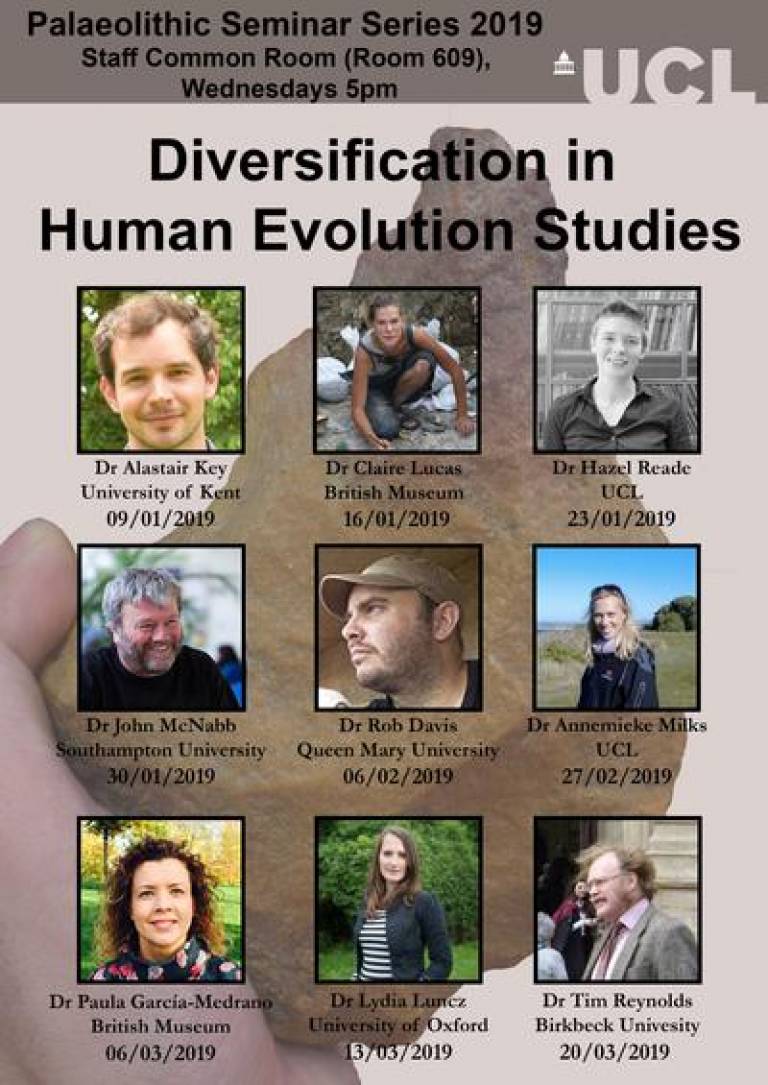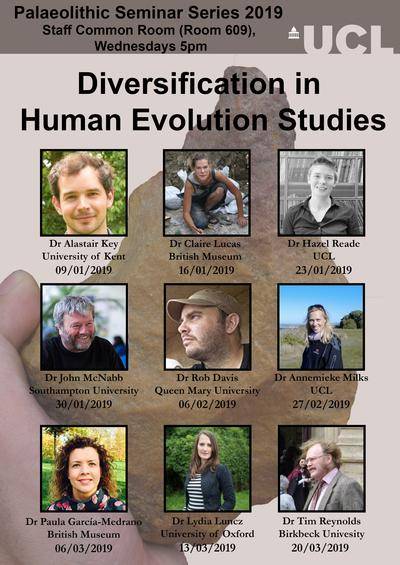Integrating experimental archaeology, ballistics, and morphometric analysis to understand the earliest hunting weapons
27 February 2019, 5:00 pm–6:00 pm

Event Information
Open to
- All
Location
-
Room 609, UCL Institute of Archaeology
Annemieke Milks (UCL) will give the next seminar in the new series on Diversification in Human Evolution Studies at the UCL Institute of Archaeology on 27 February.
Abstract
The earliest clear examples of human weapons are untipped wooden spears dating to 400,000 to 300,000 years ago, which were likely used for hunting prey, aggressive scavenging of carcasses from other predators, and self-defence against such predators. The archaeological record for early spear use is sparse, primarily due to the poor preservation of wood. Hand-delivered spears, likely used as both contact weapons thrust into prey, and weapons thrown by hand like a javelin, are generally characterised as ineffective, low-energy, inaccurate and close-range weapons. Models of prehistoric weapons tend to emphasise the limitations for pre-sapiens hunters in relation to the technological superiority of the hunting gear of H. sapiens. The assumed improvements of complex projectiles - such as spearthrowers and bow-and-arrows - include an increase velocity and thus energy at impact, and distance from prey. In fact this model has fundamental methodological problems due to a richer history of research on complex projectiles; another issue relates to limitations in experimental replication of the earliest weapons including differences in physiology, cognition, and technological proficiency between Middle Pleistocene Homo and the present-day experimental archaeologists who try to replicate them. In order to replicate weapons in controlled experimental settings, we require naturalistic performance data based on skilled use. Such data help establish fundamentals regarding the physics of flight and impact ballistics so that experimenters can set up controlled experimentation that replicate variables such as velocity, mass, and energy.
This talk will cover experimental and morphometric approaches to Middle and early Late Pleistocene wooden spears from the speaker's doctoral thesis at UCL. Interdisciplinary experimental work, conducted in collaboration with the Impact and Armour Group (Cranfield University, Now at Defence and Security Accelerator, Porton Down), and Loughborough University have established human performance data in spear thrusting and throwing that are beginning to build a clearer picture of the physics of spear use. Naturalistic use by technologically proficient users can be compared to use by replication by archaeologists; differences in performance suggest that both experience and physiology likely contribute to effective use of hand-delivered spears. Controlled experiments, with replication parameters determined by the human performance trials, will also be presented. These demonstrate that wooden spears are functional hunting weapons on large prey, but with some expected limitations probably relating to material properties. The results of the experimental programme are beginning to elucidate both advantages and limitations of these earliest known weapons. The first comparative morphometric analysis of Pleistocene wooden spears shows that the humans manufacturing them were designing the tips systematically, with the intention of using them as penetrating weapons, further supporting evidence of organised, planned hunting forays by early Neanderthals. Looking broadly at the experimental outcomes and archaeological evidence of Middle Pleistocene spears, a combination of skill, hunting knowledge, and a robust physiology are likely required for effective use. This has implications for the importance of teaching and time budgeting, language, group behaviours, and the physiology of tool-assisted hunting during the Middle and early Late Pleistocene.
Any enquiries about the event may be directed to Tomos Proffitt.
 Close
Close


